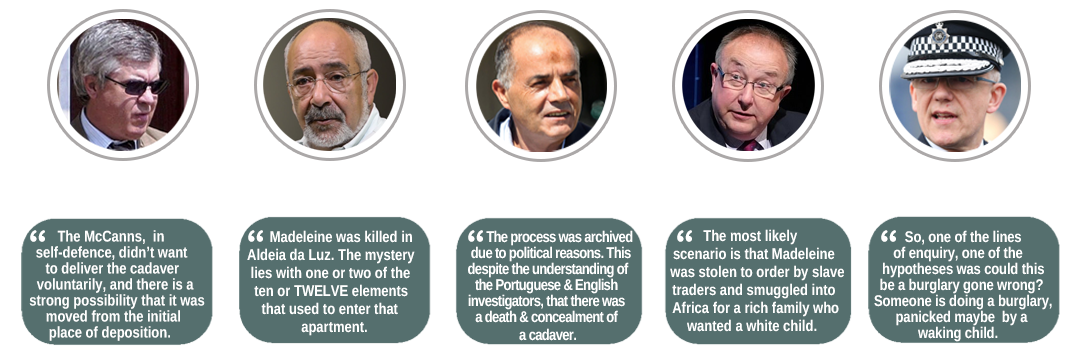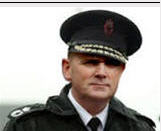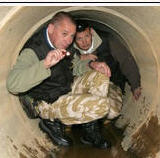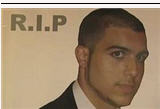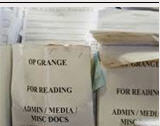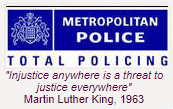DNA: Posted by Beachy on the 3 Arguidos
The Complete Mystery of Madeleine McCann™ :: Madeleine Beth McCann :: McCann Case: The most important areas of research
Page 1 of 1 • Share
 DNA: Posted by Beachy on the 3 Arguidos
DNA: Posted by Beachy on the 3 Arguidos
This was a topic of discussion on The 3 Arguido's forum. The answer to the question comes from a former police officer.
QUOTE:
bomaris wrote:
I need some help on the DNA analysis.
Can anyone tell me the following:
1. Re the 15 out of 19 markers. Do we know if any other family member shares all 15 markers - not just in theory but in reality?
2. Do we know whether the analysis could determine if the DNA came from a living or a dead body? If so, do we know which it was?
3. If the 15 out of 19 markers are consistent with it being Madeleine, what are the odds of it being someone else? Are we talking 10 to 1, 100 to 1, 1000 to 1 or more?
4. Do we have a record yet of the initial FSS assessment?
Beachy's reply:
Bomaris, precise answers to some of your questions would be impossible without actually having the results of the DNA testing in front of us, but this is what I can tell you:
For the purposes of this discussion, let us call the sample of Madeleine's DNA that was obtained from her pillow in Rothley or wherever they got it the "known sample." The DNA found in the Scenic and the apartment would have been "questioned samples."
Regardless of the number of markers you are testing, if the DNA in ANY of the markers in a questioned sample does not match the DNA in the known sample, then the questioned sample does not come from the same person who was the donor of the known sample of DNA.
I have not seen anything in writing to date, but I have been assuming that the FSS was able to extract 15 markers from the sample of DNA found in the back of the Renault Scenic, and that the other four markers were so degraded (by heat, sunlight, efforts to clean them up, whatever) that they could not be analysed. If they had 4 out of 19 markers that clearly were NOT a match for Madeleine's DNA, that would have been the end of it, in my opinion; the DNA from the Scenic could not have been hers.
I have read that the Portuguese require 19 markers for a conclusive result on a DNA analysis because under their laws that is how many markers are required for a positive match on a paternity test. This is more markers than I have ever heard of being required anywhere for forensic purposes in a criminal case. In the UK, 10 markers are tested, plus the sex of the donor is determined, and a 10:10 match is considered conclusive. In America, the FBI CODIS database contains 13 markers. Individual states in America are allowed to pass their own laws about how many markers must be tested before evidence can be introduced in court, but most of the 50 states use 13 because there is so much interface with the FBI database. Therefore, in America, a 13:13 match is considered conclusive that the questioned DNA and the known DNA came from the same person. Neverthess, if Portuguese law requires analysis of 19 markers, then that's what must be done. Period.
Regarding your specific questions:
(1) Only identical twins are born with identical DNA, and even in that case, every individual on earth begins to accumulate mutations to his/her DNA that may make it possible to distinguish even between the DNA of identical twins. There is a laboratory in Texas called Orchid Cellmark that claims it already can do this, but so far as I know, this technique has never been used in court.
The DNA of everyone on earth is at least a 99% match. Yep, that's right. The DNA of the most profoundly mentally disabled person who ever lived was a 99% match for Albert Einstein's. The DNA of the poorest beggar on the streets of the poorest city in the world, whoever that unfortunate soul happens to be, is a 99% match for the Queen's. Rather humbling, isn't it? (Note: Studies published in 2001 indicated that the DNA of all human beings was about 99.9% alike. More recent information, obtained from the human genome project, indicates that the accurate figure is probably somewhere in the range of 99 - 99.5%.)
The DNA of siblings is even more alike than that of individuals selected at random, which makes sense, considering that they inherit their DNA from the same two people. Within that 1% or less variation, however, there are literally tens of thousands of different combinations that make the DNA of any one individual unique from that of everyone else, including his/her siblings.
The FBI's CODIS database, which contains the DNA profiles of approximately 6 million convicted criminals, has been extensively studied. No 13:13 match of genetic markers has ever been found except between identical twins. There was a widely reported case several years ago in which a forensics examiner for the state of Arizona in America found a 9:13 match between two unrelated individuals, and there has also been a report of a 10:13 match between two related individuals who were products of an incestuous relationship.
Given the experience with CODIS, I think it is highly, highly unlikely (as in, the odds in favour of it would be one in the tens of millions) that one would find a 15:15 match on genetic markers between two different members of the McCann family.
(2) As I have posted before, DNA cannot be used to determine whether a person was living or dead at the time the sample was taken. A DNA sample taken by swabbing the inside of the cheek of a living person one hour before death and another sample taken from the same person one hour after death would look identical under a microscope.
What MIGHT be possible, and it would depend on several different things, including the degree of experience and skill of the forensic examiner and the quantity of DNA available, would be that a forensic examiner asked to attempt to extract DNA from some object that appeared to contain a substance that might be a bodily fluid - a piece of clothing, say, or a piece of carpet from an automobile - MIGHT be able to recognise the type of fluid and therefore tell whether the donor had been alive or dead. There are certain types of fluids - one is an exudate from the lungs that is only seen after death - that might be recognisable as such. In Madeleine's case, however, with so little material available, I am virtually certain that this would not have been possible, i.e., it would not be possible to tell whether the donor of the questioned sample of DNA found in the back of the Scenic was alive or dead at the time the DNA was deposited there.
(3) If the forensic technicians were able to extract 15 markers from the material in the Scenic that were a match for the known sample of Madeleine's DNA and the other four markers could not be tested because they were degraded, there would be a high probability mathematically that the questioned sample of DNA came from Madeleine.
Just to give you an example, at the time the forensic examiner in Arizona found the 9:13 match on DNA markers, the FBI said that the chances of that happening would be 1 in 113 billion. Well, that obviously isn't right, because there WAS, in fact, a 9:13 match, and there are nowhere near 113 billion people in the world. There is something called the "prosecutor's fallacy," which is an example of mathematical analysis called "binary classification" which shows that even 10:10 or 13:13 DNA matches are subject to error rates much higher than prosecutors sometimes attribute to them. However, whilst saying that the chance of an incorrect finding is 1 in 113 billion is clearly ridiculous, my opinion would be that the chance of two DNA samples belonging to different people if the results of the forensic analysis shows a 15:19 match would be miniscule - at least 1 out of hundreds of thousands, if not millions. It would not, however, be a smoking gun. Any DNA scientist will tell you that DNA is only one piece of the puzzle in any case and should be viewed in the context of all the other evidence. However, if FSS got a 15:19 match between Madeleine's known DNA and the questioned sample from the hire car, and 4 other markers were too degraded to be tested, in my opinion, that would be a powerful piece of circumstantial evidence.
But in fact, I don't know exactly what they got. I don't understand what John Lowe is saying. This is the statement from him that I find so troubling: "Let's look at the question that is being asked: 'Is there DNA from Madeleine on the swab?' It would be very simple to say 'yes' simply because of the number of components within the result that are also in her reference sample. What we need to consider, as scientists, is whether the match is genuine - because Madeleine has deposited DNA as a result of being in the car or whether Madeleine merely appears to match the result by chance."
What is he saying? Um, Mr. Lowe, when the "components" (also known as "markers") within the result (AKA questioned sample) are the same as those in her reference sample (AKA known sample of Madeleine's DNA), then you're SUPPOSED to say "YES," or actually you're supposed to say the final results are inconclusive because 4 of the markers were too degraded to be tested, but all the others matched. How the stuff got where it was found is not the subject of DNA analysis. That's the kind of thing that an expert witness should be prepared to be asked about on the stand at a trial; could the questioned sample of the DNA have gotten where it was found by accidental transference, for example, from another object?
DNA analysis is just that - ANALYSIS. Either they were able to extract markers from the DNA found in the Renault Scenic that were not degraded and could be analysed, or they were not. Either those markers matched the markers in the known sample of Madeleine's DNA taken from her pillow in Rothley, or they did not. Was the gentleman quoted correctly? If so, why all this double-speak? If it's the case, why in heaven's name not just SAY, "There are limits to LCN DNA technology, and the sample from the automobile was too small for any analysis to be definitive." Or, "When we tried to analyse the questioned sample from the automobile, we discovered that the DNA of two or more people were mixed together, and given the minute amount of material we had to work with, we simply were unable to separate them. We cannot say for certain when this happened, but regrettably, it made it impossible for us to determine with any reasonable degree of certainty whether the DNA was Madeleine's."
My guess - and it is just a guess - is that no one leaned on the FSS. I don't think anyone had to. My personal opinion is that they were freaked out by what happened with the trial at Omagh and knew that if they came up with DNA results that didn't stand up in this case, they could kiss their cash cow of being one of the few labs in the world that can do LCN DNA analysis good-by. Trouble is where they are concerned, there is more than one thing that can cause police departments and other agencies the world over to doubt your results. One is to make mistakes and be wrong. Another is to be too afraid to call it when you see it.
One thing I CAN understand about the DNA is why Stuart Prior read somebody from the FSS the riot act over the telephone. Good on him. Wish I'd been there to hear it. END QUOTE
QUOTE:
bomaris wrote:
I need some help on the DNA analysis.
Can anyone tell me the following:
1. Re the 15 out of 19 markers. Do we know if any other family member shares all 15 markers - not just in theory but in reality?
2. Do we know whether the analysis could determine if the DNA came from a living or a dead body? If so, do we know which it was?
3. If the 15 out of 19 markers are consistent with it being Madeleine, what are the odds of it being someone else? Are we talking 10 to 1, 100 to 1, 1000 to 1 or more?
4. Do we have a record yet of the initial FSS assessment?
Beachy's reply:
Bomaris, precise answers to some of your questions would be impossible without actually having the results of the DNA testing in front of us, but this is what I can tell you:
For the purposes of this discussion, let us call the sample of Madeleine's DNA that was obtained from her pillow in Rothley or wherever they got it the "known sample." The DNA found in the Scenic and the apartment would have been "questioned samples."
Regardless of the number of markers you are testing, if the DNA in ANY of the markers in a questioned sample does not match the DNA in the known sample, then the questioned sample does not come from the same person who was the donor of the known sample of DNA.
I have not seen anything in writing to date, but I have been assuming that the FSS was able to extract 15 markers from the sample of DNA found in the back of the Renault Scenic, and that the other four markers were so degraded (by heat, sunlight, efforts to clean them up, whatever) that they could not be analysed. If they had 4 out of 19 markers that clearly were NOT a match for Madeleine's DNA, that would have been the end of it, in my opinion; the DNA from the Scenic could not have been hers.
I have read that the Portuguese require 19 markers for a conclusive result on a DNA analysis because under their laws that is how many markers are required for a positive match on a paternity test. This is more markers than I have ever heard of being required anywhere for forensic purposes in a criminal case. In the UK, 10 markers are tested, plus the sex of the donor is determined, and a 10:10 match is considered conclusive. In America, the FBI CODIS database contains 13 markers. Individual states in America are allowed to pass their own laws about how many markers must be tested before evidence can be introduced in court, but most of the 50 states use 13 because there is so much interface with the FBI database. Therefore, in America, a 13:13 match is considered conclusive that the questioned DNA and the known DNA came from the same person. Neverthess, if Portuguese law requires analysis of 19 markers, then that's what must be done. Period.
Regarding your specific questions:
(1) Only identical twins are born with identical DNA, and even in that case, every individual on earth begins to accumulate mutations to his/her DNA that may make it possible to distinguish even between the DNA of identical twins. There is a laboratory in Texas called Orchid Cellmark that claims it already can do this, but so far as I know, this technique has never been used in court.
The DNA of everyone on earth is at least a 99% match. Yep, that's right. The DNA of the most profoundly mentally disabled person who ever lived was a 99% match for Albert Einstein's. The DNA of the poorest beggar on the streets of the poorest city in the world, whoever that unfortunate soul happens to be, is a 99% match for the Queen's. Rather humbling, isn't it? (Note: Studies published in 2001 indicated that the DNA of all human beings was about 99.9% alike. More recent information, obtained from the human genome project, indicates that the accurate figure is probably somewhere in the range of 99 - 99.5%.)
The DNA of siblings is even more alike than that of individuals selected at random, which makes sense, considering that they inherit their DNA from the same two people. Within that 1% or less variation, however, there are literally tens of thousands of different combinations that make the DNA of any one individual unique from that of everyone else, including his/her siblings.
The FBI's CODIS database, which contains the DNA profiles of approximately 6 million convicted criminals, has been extensively studied. No 13:13 match of genetic markers has ever been found except between identical twins. There was a widely reported case several years ago in which a forensics examiner for the state of Arizona in America found a 9:13 match between two unrelated individuals, and there has also been a report of a 10:13 match between two related individuals who were products of an incestuous relationship.
Given the experience with CODIS, I think it is highly, highly unlikely (as in, the odds in favour of it would be one in the tens of millions) that one would find a 15:15 match on genetic markers between two different members of the McCann family.
(2) As I have posted before, DNA cannot be used to determine whether a person was living or dead at the time the sample was taken. A DNA sample taken by swabbing the inside of the cheek of a living person one hour before death and another sample taken from the same person one hour after death would look identical under a microscope.
What MIGHT be possible, and it would depend on several different things, including the degree of experience and skill of the forensic examiner and the quantity of DNA available, would be that a forensic examiner asked to attempt to extract DNA from some object that appeared to contain a substance that might be a bodily fluid - a piece of clothing, say, or a piece of carpet from an automobile - MIGHT be able to recognise the type of fluid and therefore tell whether the donor had been alive or dead. There are certain types of fluids - one is an exudate from the lungs that is only seen after death - that might be recognisable as such. In Madeleine's case, however, with so little material available, I am virtually certain that this would not have been possible, i.e., it would not be possible to tell whether the donor of the questioned sample of DNA found in the back of the Scenic was alive or dead at the time the DNA was deposited there.
(3) If the forensic technicians were able to extract 15 markers from the material in the Scenic that were a match for the known sample of Madeleine's DNA and the other four markers could not be tested because they were degraded, there would be a high probability mathematically that the questioned sample of DNA came from Madeleine.
Just to give you an example, at the time the forensic examiner in Arizona found the 9:13 match on DNA markers, the FBI said that the chances of that happening would be 1 in 113 billion. Well, that obviously isn't right, because there WAS, in fact, a 9:13 match, and there are nowhere near 113 billion people in the world. There is something called the "prosecutor's fallacy," which is an example of mathematical analysis called "binary classification" which shows that even 10:10 or 13:13 DNA matches are subject to error rates much higher than prosecutors sometimes attribute to them. However, whilst saying that the chance of an incorrect finding is 1 in 113 billion is clearly ridiculous, my opinion would be that the chance of two DNA samples belonging to different people if the results of the forensic analysis shows a 15:19 match would be miniscule - at least 1 out of hundreds of thousands, if not millions. It would not, however, be a smoking gun. Any DNA scientist will tell you that DNA is only one piece of the puzzle in any case and should be viewed in the context of all the other evidence. However, if FSS got a 15:19 match between Madeleine's known DNA and the questioned sample from the hire car, and 4 other markers were too degraded to be tested, in my opinion, that would be a powerful piece of circumstantial evidence.
But in fact, I don't know exactly what they got. I don't understand what John Lowe is saying. This is the statement from him that I find so troubling: "Let's look at the question that is being asked: 'Is there DNA from Madeleine on the swab?' It would be very simple to say 'yes' simply because of the number of components within the result that are also in her reference sample. What we need to consider, as scientists, is whether the match is genuine - because Madeleine has deposited DNA as a result of being in the car or whether Madeleine merely appears to match the result by chance."
What is he saying? Um, Mr. Lowe, when the "components" (also known as "markers") within the result (AKA questioned sample) are the same as those in her reference sample (AKA known sample of Madeleine's DNA), then you're SUPPOSED to say "YES," or actually you're supposed to say the final results are inconclusive because 4 of the markers were too degraded to be tested, but all the others matched. How the stuff got where it was found is not the subject of DNA analysis. That's the kind of thing that an expert witness should be prepared to be asked about on the stand at a trial; could the questioned sample of the DNA have gotten where it was found by accidental transference, for example, from another object?
DNA analysis is just that - ANALYSIS. Either they were able to extract markers from the DNA found in the Renault Scenic that were not degraded and could be analysed, or they were not. Either those markers matched the markers in the known sample of Madeleine's DNA taken from her pillow in Rothley, or they did not. Was the gentleman quoted correctly? If so, why all this double-speak? If it's the case, why in heaven's name not just SAY, "There are limits to LCN DNA technology, and the sample from the automobile was too small for any analysis to be definitive." Or, "When we tried to analyse the questioned sample from the automobile, we discovered that the DNA of two or more people were mixed together, and given the minute amount of material we had to work with, we simply were unable to separate them. We cannot say for certain when this happened, but regrettably, it made it impossible for us to determine with any reasonable degree of certainty whether the DNA was Madeleine's."
My guess - and it is just a guess - is that no one leaned on the FSS. I don't think anyone had to. My personal opinion is that they were freaked out by what happened with the trial at Omagh and knew that if they came up with DNA results that didn't stand up in this case, they could kiss their cash cow of being one of the few labs in the world that can do LCN DNA analysis good-by. Trouble is where they are concerned, there is more than one thing that can cause police departments and other agencies the world over to doubt your results. One is to make mistakes and be wrong. Another is to be too afraid to call it when you see it.
One thing I CAN understand about the DNA is why Stuart Prior read somebody from the FSS the riot act over the telephone. Good on him. Wish I'd been there to hear it. END QUOTE

ufercoffy- Posts : 1662
Activity : 2101
Likes received : 32
Join date : 2010-01-04
 DNA revisited
DNA revisited
This was also post by 'beachy' on The 3 Arguidos
Thanks to Joana Morais and Lilemor for alerting us to its existence, I located the actual PDF file on the FBI's forensic examination in the Caylee Anthony case (http://www.wftv.com/download/2008/1024/17794795.pdf) and read it. This is what jumped out at me:
"Results of examinations:
A Caucasian head hair found in specimen Q12 exhibits characteristics of APPARENT DECOMPOSITION [emphasis mine] at the proximal (root) end."
Now, before I lose it entirely, which I am definitely about to do, let me say that whilst this has evidentiary value, it is not a smoking gun.
Mitochondrial DNA analysis of another portion of the hair subsequently showed that it contained mitochondrial DNA which could have come from either Caylee Anthony or her mother, Casey. But Casey is sitting in jail in Orlando and isn't in a state of "apparent decomposition," is she? (Though she could be before too much longer, as she's been charged with first-degree, capital murder, and Florida is one of the states in America which does not mess around when it comes to executions.)
Caylee disappeared in mid-June. Casey's car was found abandoned in late June, approximately 15 days later. Gestalt, I love you, you've provided us with a lot of valuable information, but the situation with the hair in this case shows that it does NOT take 90 days or more for "corpse hairs" to show signs of decomposition, as you've told us. The article I've quoted again and again from timesonline in which Dr. Michael Baden says that changes indicating that a particular hair came from a corpse can show up as little as 5 days after death was correct. 15 days was long enough for it to show up in Caylee Anthony's hair found in her mum's car. 25 days certainly should have been long enough for signs of decomposition to appear in the hairs found in the back of the McCanns' hire car.
WHY IN HELL ISN'T THERE ANYTHING ANYWHERE - IN THE PJ REPORT, IN THE FSS REPORT, ANYWHERE TO INDICATE WHETHER THE HAIRS FOUND IN THE MCCANN'S HIRE CARE WERE CHECKED FOR SIGNS OF DECOMPOSITION? In the Caylee Anthony case they had one hair. ONE HAIR. And they checked it and found signs of decomposition AND mitochondrial DNA proving it could have come from Caylee. I don't know whether or not hairs were found in the McCanns' hire car in anything like the amount that press reports initially indicated, but they had more than one. Where is it? Was it checked for signs of decomposition? If not, why not? If it was, where's the report? The FSS supposedly determined that hair found in the McCanns' hire car contained Kate's (and also, therefore, Madeleine's DNA). They shouldn't have had to destroy a mass of hair to do that. Testing for mitochondrial DNA is not rocket science. A good university laboratory should be able to do it with a single hair, much less the most vaunted laboratory on the planet. SO WHERE IS THE REST OF THE HAIR, FSS?
There is no excuse for this. NONE. Every single hair found in the hire car should have been checked for (1) signs of decomposition; and (2) mitochondrial DNA. And if they determined that "corpse hairs" from a person with mtDNA identical to Madeleine's were found in that car, in my opinion the McCanns should have been ordered back to Portugal and thrown in the slammer whilst additional investigation was carried out.
Youtube video links:
Martin Brunt: DNA matches Maddie's
LVA 6.50 Analysis - McCann Sedatives Statement
Thanks to Joana Morais and Lilemor for alerting us to its existence, I located the actual PDF file on the FBI's forensic examination in the Caylee Anthony case (http://www.wftv.com/download/2008/1024/17794795.pdf) and read it. This is what jumped out at me:
"Results of examinations:
A Caucasian head hair found in specimen Q12 exhibits characteristics of APPARENT DECOMPOSITION [emphasis mine] at the proximal (root) end."
Now, before I lose it entirely, which I am definitely about to do, let me say that whilst this has evidentiary value, it is not a smoking gun.
Mitochondrial DNA analysis of another portion of the hair subsequently showed that it contained mitochondrial DNA which could have come from either Caylee Anthony or her mother, Casey. But Casey is sitting in jail in Orlando and isn't in a state of "apparent decomposition," is she? (Though she could be before too much longer, as she's been charged with first-degree, capital murder, and Florida is one of the states in America which does not mess around when it comes to executions.)
Caylee disappeared in mid-June. Casey's car was found abandoned in late June, approximately 15 days later. Gestalt, I love you, you've provided us with a lot of valuable information, but the situation with the hair in this case shows that it does NOT take 90 days or more for "corpse hairs" to show signs of decomposition, as you've told us. The article I've quoted again and again from timesonline in which Dr. Michael Baden says that changes indicating that a particular hair came from a corpse can show up as little as 5 days after death was correct. 15 days was long enough for it to show up in Caylee Anthony's hair found in her mum's car. 25 days certainly should have been long enough for signs of decomposition to appear in the hairs found in the back of the McCanns' hire car.
WHY IN HELL ISN'T THERE ANYTHING ANYWHERE - IN THE PJ REPORT, IN THE FSS REPORT, ANYWHERE TO INDICATE WHETHER THE HAIRS FOUND IN THE MCCANN'S HIRE CARE WERE CHECKED FOR SIGNS OF DECOMPOSITION? In the Caylee Anthony case they had one hair. ONE HAIR. And they checked it and found signs of decomposition AND mitochondrial DNA proving it could have come from Caylee. I don't know whether or not hairs were found in the McCanns' hire car in anything like the amount that press reports initially indicated, but they had more than one. Where is it? Was it checked for signs of decomposition? If not, why not? If it was, where's the report? The FSS supposedly determined that hair found in the McCanns' hire car contained Kate's (and also, therefore, Madeleine's DNA). They shouldn't have had to destroy a mass of hair to do that. Testing for mitochondrial DNA is not rocket science. A good university laboratory should be able to do it with a single hair, much less the most vaunted laboratory on the planet. SO WHERE IS THE REST OF THE HAIR, FSS?
There is no excuse for this. NONE. Every single hair found in the hire car should have been checked for (1) signs of decomposition; and (2) mitochondrial DNA. And if they determined that "corpse hairs" from a person with mtDNA identical to Madeleine's were found in that car, in my opinion the McCanns should have been ordered back to Portugal and thrown in the slammer whilst additional investigation was carried out.
Youtube video links:
Martin Brunt: DNA matches Maddie's
LVA 6.50 Analysis - McCann Sedatives Statement

ufercoffy- Posts : 1662
Activity : 2101
Likes received : 32
Join date : 2010-01-04
The Complete Mystery of Madeleine McCann™ :: Madeleine Beth McCann :: McCann Case: The most important areas of research
Page 1 of 1
Permissions in this forum:
You cannot reply to topics in this forum

